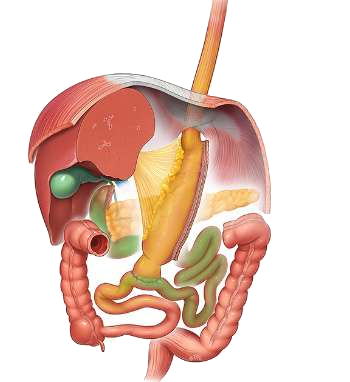Our team of experts is at the forefront of weight loss surgery. We will work with you to find the best weight loss procedure for your goals and needs. The laparoscopic/robotic SADI-S is one of the surgery options we offer at Brigham and Women’s Hospital. Laparoscopic/robotic techniques use only a few tiny incisions (cuts), unlike traditional open surgery. The laparoscopic/robotic SADI-S is considered a minimally invasive approach. This means it’s safer and you have a faster recovery time than if you had open surgery.
In this procedure, surgeons perform sleeve gastrectomy (remove the outer portion (also called crescent) of the stomach) so that the new stomach looks like a narrow sleeve. In addition, part of the upper small intestine gets divided and connected to a loop of the lower, small intestine.

After SADI-S procedure, there are hormonal changes that will lead you to have less hunger after surgery. After surgery, the stomach is reduced to the size of a banana resulting in a much smaller stomach. Due to the additional changes with the small intestine routing, there is some malabsorption of both macronutrients (calories) and micronutrients (vitamins and minerals) that can occur. As a result of all of these changes, weight loss occurs.
After treatment, you can expect to:
After surgery, improvements to weight-related health conditions are very common. These can include sleep apnea, high blood pressure, and type 2 diabetes among others. In some cases, these conditions may even resolve completely after weight loss surgery.
You need to have a certain body mass index (BMI) to quality for surgery. You may qualify if:
Healthcare professionals use BMI to check your risk for weight-related diseases. BMI is based on a formula that considers your current weight and height. While it’s not a perfect method, it can be a useful health indicator for many people. To find out your BMI, you can use our BMI calculator. Even if you don’t qualify for bariatric surgery, we offer other weight loss options like endoscopic treatments and medically supervised treatments.
We will work with you to help you make lifestyle changes before surgery. You will have a few consultations with providers leading up to the surgery. These include:
The operation takes about 3 hours to perform and the hospital stay is 1-2 days. Patients usually return to work in 2-4 weeks. After the surgery, you will also need to take daily vitamin supplements especially fat soluble vitamins (A,D,E and K). After surgery, you move through a staged eating plan which consists of:
Other nutrition considerations:
Yes, we offer ongoing support to help you keep the weight off. Our comprehensive team – which includes surgeons, physician assistants, psychologists, and dietitians – helps support you to ensure you remain successful long after your surgery have been completed.
We offer:
Contact us at 617-525-3597 to schedule a consult with a surgeon, or schedule all of your preoperative visits with the surgeon, psychologist, and dietitian.
Insurance coverage for SADI-S does vary, so it is important that you review your plan’s policy to understand if this surgery will be covered.
Abdelrahman Nimeri, MBBCH
Director of Bariatric Surgery
For over a century, a leader in patient care, medical education and research, with expertise in virtually every specialty of medicine and surgery.
About BWH